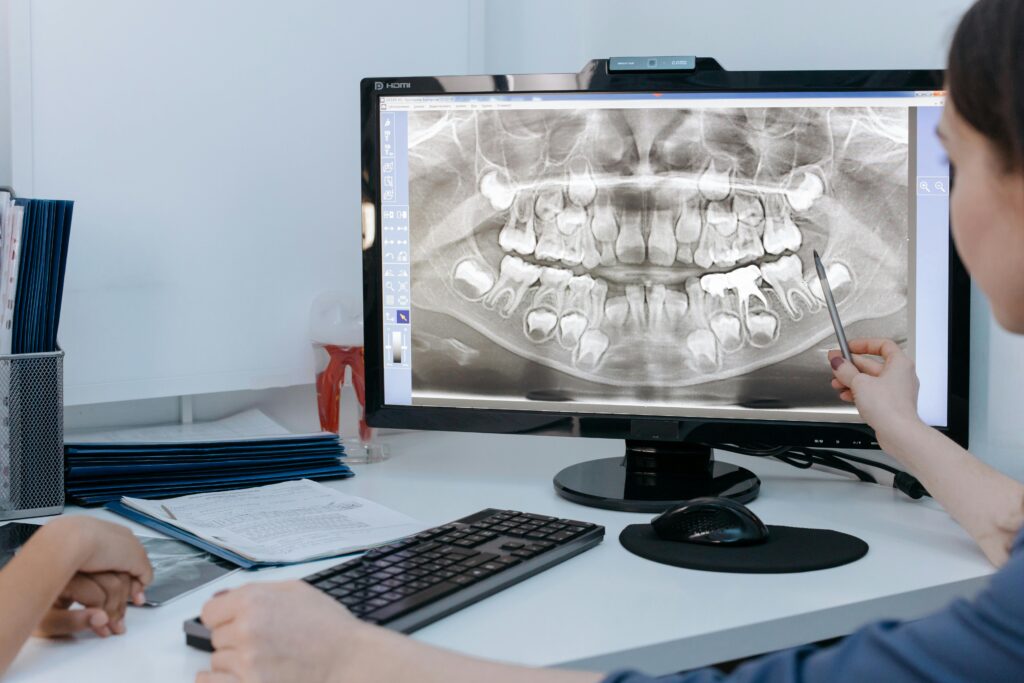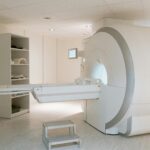The American Dental Association (ADA) has released new guidelines for dental x-ray practices. Among them is a recommendation that practices no longer need to provide lead aprons, thyroid shields, or other protective gear. This comes from the research and belief that modern digital x-rays machines emit such little radiation that the additional equipment becomes entirely unnecessary.
Of course, after years of depending on that apron for safety, it might feel odd to leave it behind, but take a look below to learn about some of the myths and truths that are layered into the recent history of radiography.
Myth #1: X-rays Are Always Harmful to Your Health
The belief that x-rays are harmful is not unfounded. In the early years of their development and normalization, there were great risks that came with using them. When these dangers came to light and awareness rose about the side effects of ionizing radiation, the field of radiography began to shift to minimize these risk while still using vital technology. over the years, the use of lead aprons and thyroid collars became a necessary safety factor, even though regular development of new x-rays machines continuously lowered the risk.
Truth:
Modern x-ray machines are crucial advancements in the field of medical diagnostics. By emitting low levels of radiation, these machines provide detailed images that are essential for accurate diagnoses. They allow healthcare professionals to pinpoint issues within the body with precision, leading to better treatment plans and improved patient outcomes. The safety measures implemented in modern x-ray machines ensure minimal exposure to radiation, even without a lead apron, making them a reliable and indispensable tool in the medical field.
Myth #2: Lead Aprons Are Sufficient Protection Against Radiation Exposure
Lead aprons were once considered to be the height of efficient radiation protection, but the truth was not so clean-cut. While lead aprons did effectively offset approximately 90% or more of scatter radiation that came from x-rays, what was left had potential to build-up over time, meaning that x-rays technicians and technologists had, and still have, an increased risk of developing certain cancer types due to to ‘occupational exposure’.
Increased built-in safety measures built into x-ray machines and other similar technology have done a great deal to reduce this risk, but the explicit dependence on lead aprons that was heavily emphasized can lead to distrust in spite of new advancements.
Truth:
Lead aprons and thyroid collars have long been staples in radiation protection, shielding healthcare professionals and patients from harmful exposure during medical procedures. While lead aprons are effective in reducing radiation exposure, it is crucial to understand their limitations. Lead aprons do not provide full-body protection and can be cumbersome to wear for extended periods.
Therefore, modern digital x-ray machines have developed to help close that divide and become safer for patients as well. With the machines currently in use, professionals and patients alike are exposed to, what is considered to be, an absolutely minimal amount of radiation. It is considered a negligible amount, even when considering that healthcare professionals will be exposed to it far more often then patients, hence the belief that lead aprons and thyroid collars are no longer necessary equipment during x-rays.
Myth #3: Pregnant Women Should Avoid All X-rays at Any Cost
It was once believed that any amount of exposure a woman has to radiation while pregnant can put the child at risk. Over time, this belief took on many forms, from saying that any amount of radiation was deadly to the fetus to saying that only the furthest of extremities were safe to image.
Truth:
Medical professionals have established clear guidelines regarding the use of x-rays during pregnancy to ensure the safety of both the pregnant patient and baby. By following these guidelines and taking necessary precautions, such as using the lowest possible radiation dose and only taking new x-rays when necessary, the risks associated with x-ray exposure can be minimized. It is essential for healthcare providers to prioritize the health and well-being of pregnant patients by adhering to these protocols.
Debunking Misconceptions to Promote Safe Practices in Radiology
Radiation safety is a critical aspect of using x-ray machines, and understanding the facts about these devices is essential for ensuring proper protection. By following lead apron usage guidelines, you can effectively shield yourself from harmful radiation exposure. Keeping up to date on policies from regulating bodies is a great step to staying informed and proactive in this matter, as well.
If you are looking to join a healthcare system that is proactive on this front as well, then check out our open opportunities on our job board. If you are looking for something different than what you see there, send us an updated resume and connect with a recruiter today about next steps to finding the right roles for you!











